Brian Megaw, a river guide on New Zealand’s North Island, thought there must be a better way to run the Whanganui River. On this historic river that meanders through the verdant mountains and canyons of Whanganui National Park, commercial trips were limited to paddle-your-own canoe rentals. From what Brian saw, most couples zigzagged back and forth arguing, capsized in the river’s small rapids, and got to camp exhausted, having completely missed the enchanting beauty of the steep, sinuous, forest-draped gorge. Why not bring dories to New Zealand? They would fit right into the scenery and the ancient Maori traditions of the river. Passengers could relax, soak in the beauty, eat a decent meal before dark, and enjoy the skills and knowledge of trained boatmen. Brian had seen the Grand Canyon dory in the States—an elegant, stately wooden boat that gives a great ride and brings pleasure to the eye and soul.
After a roundabout search and many missed connections, Brian found a master dory builder, Andy Hutchinson, in Dolores, Colorado. Andy builds decked dories in the stitch-and-glue method, which requires a good deal of fiberglass work. Brian was hoping for something a bit quicker and more affordable, without decking. And he wanted two boats. Andy called a boatbuilder friend of his in Flagstaff, Arizona: me.
I build plywood-on-frame boats. They come together quite quickly, especially with the free-form assembly method I prefer. It is an old-fashioned way to build, but it eliminates the need for a strongback and provides a good, durable construction method for the kind of open boats Brian wanted.
“Yo, Brad,” said Andy, “Wanna go to New Zealand and help build a couple dories?”
“Hard to say no.”
The boats we planned to build were the classic Briggs Grand Canyon dory, originally designed and built in 1971 by Jerry Briggs of Grants Pass, Oregon, for environmentalist Martin Litton to use in his fledgling company, Grand Canyon Dories. At Litton’s behest, Briggs designed a modified form of his classic Oregon drift boat, the Rogue River Special, and called it the Grand Canyon dory. It is still—even 45 years later—considered the most beautiful, most functional, sweetest-rowing river dory ever built. Of the 36 boats Briggs built over the next dozen years, all but one are still serviceable. The originals are considered by dory aficionados to be the Stradivarius boats of the river. Andy, his wife Kate, and I are proud owners of three of them.
To build a boat in the free-form method I use, you need very accurate plans. It’s a bit like stitch-and-glue in that you don’t need to build a massive form to fit the pieces to, but all of the pieces must be precisely cut before they’re assembled. Previous attempts to perfectly define and replicate the unique, sexy lines of a Briggs had fallen short. Fortunately, Andy’s dory, COTTONWOOD, had never undergone a full rebuild and was one of the last Briggs-built boats still in its original form. We used it to pull off an extremely precise set of measurements. I lofted the lines, adjusted for errors, and packaged the drawings to hand-carry to New Zealand.
With our tight schedules at home, we had less than a month to build both boats. Insane, but possible, we hoped. Andy finalized arrangements with Brian, and we left for New Zealand. Well, I left. Somehow Andy’s work visa got stuck in the process. It was up to me to get things rolling, and rolling fast.
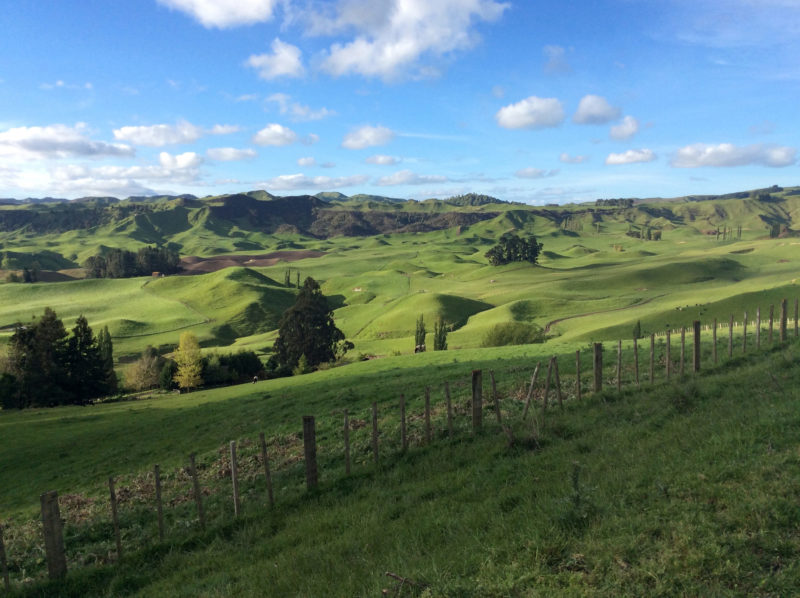 Brad Dimock
Brad DimockThe pasturelands of New Zealand are almost painfully green. Armies of sheep keep it as well manicured as a golf course.
Brian met me at the airport in Palmerston North on New Zealand’s North Island. We bought tools: a cheap tablesaw and a beautiful set of cordless hand tools. We drove an hour north to the small farming town of Taihape, headed east on a narrow winding road to a rural area called Pukeokahu, then up a narrow, steep dirt track to a weathered, gray sheep shed on top of a hill. No matter what direction I looked, the rolling, mountainous terrain was everywhere shorn to an electric green, and dotted with thousands upon thousands of sheep. In New Zealand, where sheep outnumber people, it’s not an uncommon sight.
Inside the sheep shed was a cluttered chaos of old busted tools, plumbing parts, boxes of archaic farming gear, and a large pile of lumber. An enclosed room within the shed was our designated shop, big enough to build one boat. An attached open bay would house the second boat once we cleared away a mountain of old machinery. On the far side of the bay was a pen full of a half dozen orphaned lambs. Their incessant bleating was my musical entertainment for the duration of the project; their odor became mine. Although there was electricity (most of the time), there was no phone, no cell coverage, no Internet. The wind howled. It was cold. It rained. Our insane schedule–two boats in three-and-a-half weeks–no longer looked that good.
Brian and I climbed back in the van and descended into the narrow gorge of the Rangitikei River, where Brian, his wife Nicola, and their married daughter Janey run a lodge in the Rangitikei River valley. In addition to food, grog, and lodging, they offer horseback riding in the hills and whitewater rafting trips. It is a regular stop on tourists’ itineraries, and business had been good. A large dinner and plenty of beer improved my spirits, and I soon collapsed in my room.
The next morning Brian dropped me off at the sheep shed with a pack lunch, a coffee pot, and a handheld radio to communicate with him and with the lodge. I began clearing and organizing the shed, moving the aforementioned mountain of debris into a back room. I unearthed a small woodstove in the corner and started a roaring fire–my salvation in this drafty shop. I built a lofting table by the window, made tool shelves, and organized the lumber Brian had acquired: marine mahogany plywood for the skin, clear Port Orford cedar for framing, and white oak for the gunwales and chines. I knocked together a couple sawhorses. Brian and I hauled a large load of lumber into a cabinetry shop in Taihape to be surfaced and ripped down to sizes I could work with. Finally ready to begin, I laid out our new and untested plans and began cutting and assembling the frames.
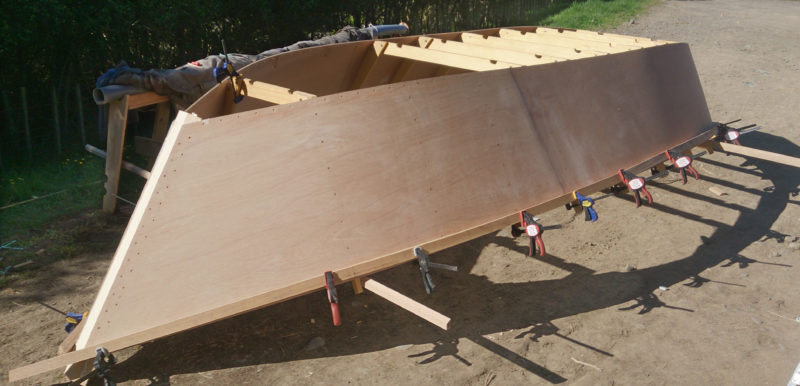 Brad Dimock
Brad DimockOn a sunny New Zealand morning outside the sheep shed we assembled the first free-form hull. We immediately began using the hull as a form on which to steam-bend the chines and gunwales.
Each evening Brian retrieved me, plied me with dinner and a bottomless mug of beer, and sent me to bed. Each morning, after coffee and breakfast, he dropped me off at the shed. I would start a raging fire and get to work, all the while hoping Andy’s visa would come through soon.
I had built quite a few drift boats and dories before and had devised many tricks and techniques in my well-equipped shop back home. But here in my mountaintop exile, most of my familiar tools—bandsaw, router jigs, hundreds of unique hand tools for different angles and tolerances—were missing. I had to devise new ways to cut scarf joints, clamp 4′-wide seams, and many more commonplace things that had suddenly become quite challenging. I made crude jigs from scrap lumber, employed wedges to make clamps. Fortunately most of my inventions worked.
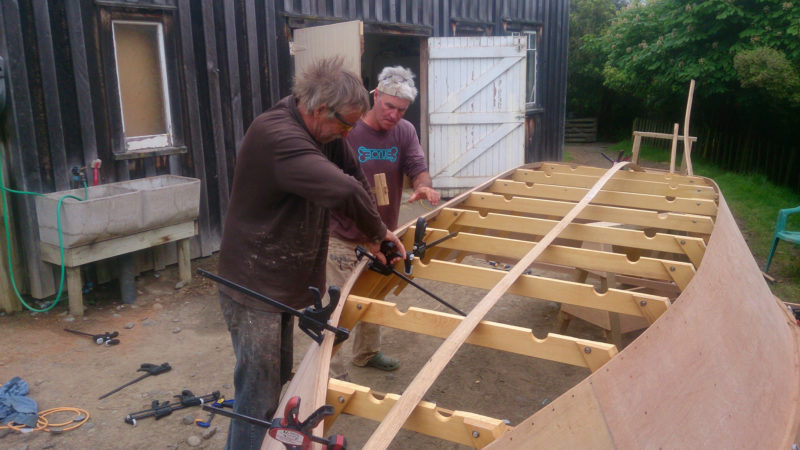 Kate Thompson
Kate ThompsonAfter steam bending and scarf-jointing a full-length chine log, Andy and I finished the precise compound-angle end cuts to fit it tightly into the hull.
For steam-bending chines and gunwales, Brian and I cobbled together a steambox made from plastic sewer pipe with wooden end plugs, an old 5-gallon solvent can for the boiler, and a large but terribly old and rusty stove burner to supply a propane flame. The gas orifice was missing, so, having no alternative, I hammered a piece of hardwood into the gas port and drilled a small hole. Common sense would advise against making a wooden part for a gas stove, but it actually worked. It had kind of a sooty, yellow flame, but it was plenty hot.
The clock ticked on. I started early in the morning, cut wood, assembled parts, glued up side-panels, oiled the wood, stoked the fire, ate, drank, slept. A week went by. Fortunately Brian could occasionally break away from the lodge to help. A couple of Brian’s boatmen stopped in from time to time to land a hand. Derik, an American guide, was my stalwart helper when his schedule allowed. Kirk, another American, showed up a when he could.
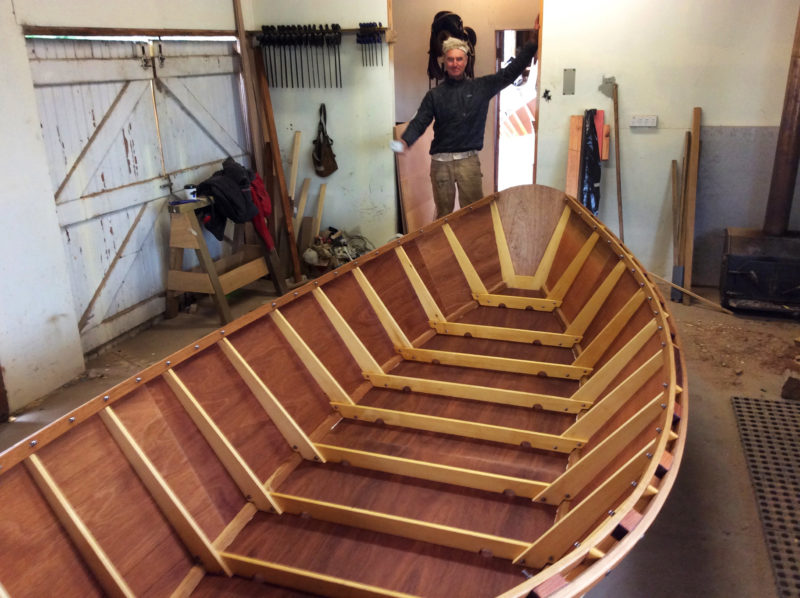 Brad Dimock
Brad DimockThe sweet sweep of a Briggs boat’s gunwales—and the relief of completing a hull–brought a gratified smile to Andy Hutchinson’s face.
I tried to keep my materials coming before needs developed, sending in my shopping lists by radio. Most days someone from the lodge was making the half-day run into Taihape, and could buy basic hardware or lumber for us, or the full-day run to Palmerston North where most everything else was available if you knew what the Kiwi name for it was: “Lodge to Dory Central. Brian is leaving for town. Do you need anything today?” Skreeech. “Dory Central to Lodge. Tell Brian we need another liter of turps. And a hundred more 40-cm stainless-steel coach bolts. And we need the Tasmanian Blackwood if it has been cut.” Squawk.
By the tenth day we had finished all 20 frames, two stems, and two transoms–and all were sanded and oiled. We had cut and scarfed–but not yet bent or glued up–eight chines and gunwales. And we had scarf-cut and glued together all four 20’ side panels and both bottoms.
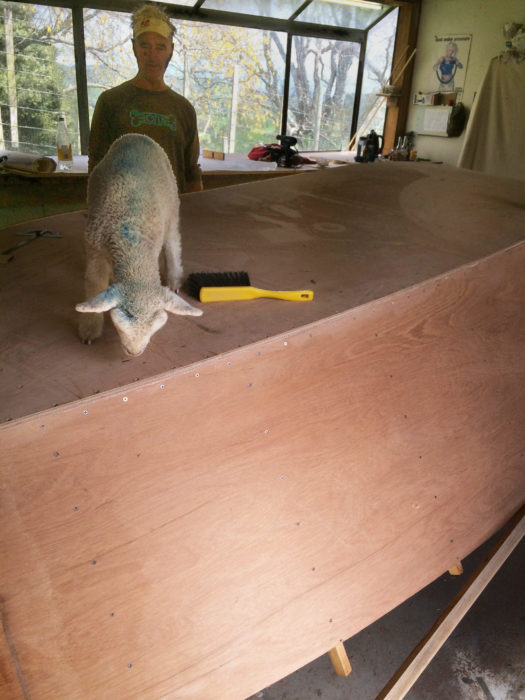 Brad Dimock
Brad Dimock The inspector general approves the new hull. The young Kiwi farm girls painted our favorite lamb blue.
Brian had left for Palmerston North that morning with a large list of odd items to hunt down. And—hurrah!—picked up Andy, whose assistant I had originally signed on to be. Andy had flown in the night before with his wife Kate–also a boatman and good hand in the shop. They rolled up to the sheep shed late that afternoon. We embraced with relieved smiles all around, and celebrated. We knew it was overly optimistic, but we still hoped to finish the boats in time to do an overnight trip on the Whanganui. We had fourteen days to turn this pile of sticks into two finished boats.
The following morning we cut out two side panels, marked and drilled them for screws, and assembled the first hull. With proper preparation, free-form hulls usually come together suddenly, in just over an hour, a gratifying reward after long preparation. No doubt the Kiwis were thinking, “Thank God the real boatbuilder finally arrived and we can see some results.” With one hull shaped we fired the steambox and began clamping all the oak chines and gunwales into shape, gluing them into full-length pieces as soon as they were cool and dry. The next day we built a second hull. For the next week we danced between steam-bending, gluing chines and gunwales, installing chines and bottoms, and rolling the boats upright to begin notching the frame heads for inwale installation.
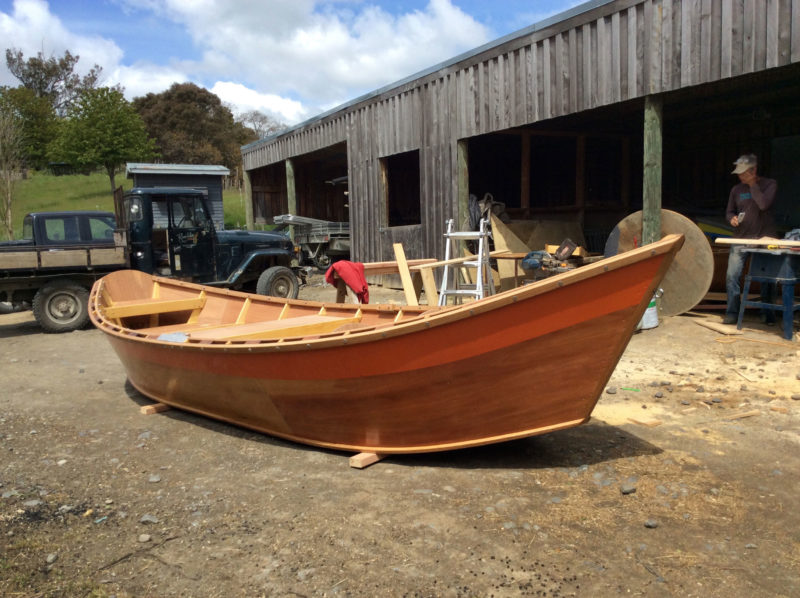 Brad Dimok
Brad DimokWith seat and oarlocks in place and her paint stripes and varnish still drying on a New Zealand hilltop, we called her done.
Every day each assemblage of raw lumber looked more like a boat, more graceful, more refined, and even sexier as completion crept ever closer. The gunwales were fit tightly, bolted into and onto the boat in graceful arcs, sanded smooth, all corners routed to a round edge, and then oiled. The crude forms abruptly and dramatically became elegant art, first one boat, then the other.
We employed the old Oregon-style finish, sealing the outside with epoxy, varnish, or paint, depending upon its exposure. We went with a varnished exterior with an earthy color stripe painted along the top third. We oiled the gunwales and interiors to preserve and show off the beautiful woodwork. Eight days after Andy and Kate arrived, the hulls were complete.
With growing optimism we began outfitting: seats, floorboards, oarlocks, fly decks, bow and stern eyes, and a host of other finicky details. Another five days passed, and late one Friday we cut and installed the final piece—the floor of the last sidebox—on time, with hours to spare, even. Champagne flowed.
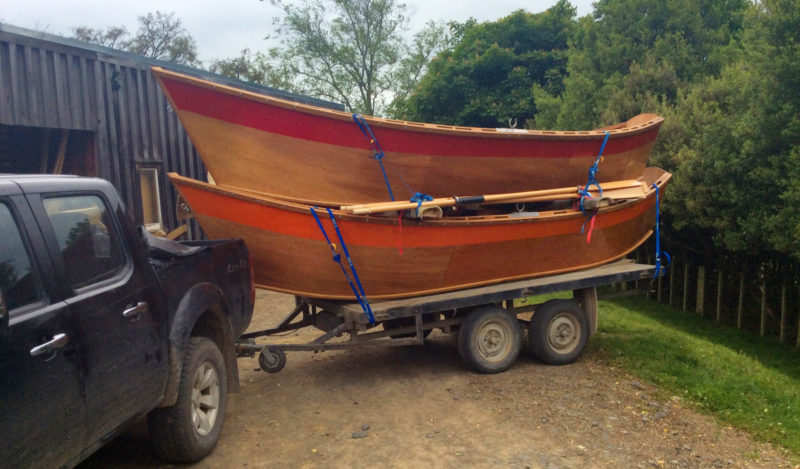 Brad Dimock
Brad DimockIn the howling wind Brian Megaw and I crafted the double-stack loading system, assembled from an old farm trailer, weathered planks, rotting carpeting, two barn hinges, and a box of drywall screws.
On Saturday, Andy and Kate took the morning off to paddle the Rangitikei, while Brian and I headed for Taihape to borrow a trailer and invent a loading and transport system for two dories. Two padded planks bridged the gunwales of the lower boat. A pair of carpeted wooden ramps pinned onto these cross planks allowed us to side-load the upper dory with its rockered bottom nesting in the lower boat’s sheer. Another miracle: it worked. That evening we hauled two very sexy boats down to the lodge. By a small, calm stretch of the river, we unloaded the top boat for a test run. She rowed like a dream. She was most definitely a Briggs. After several victory laps around the eddy we reloaded the boats and packed them full of gear for our inaugural float down the Whanganui.
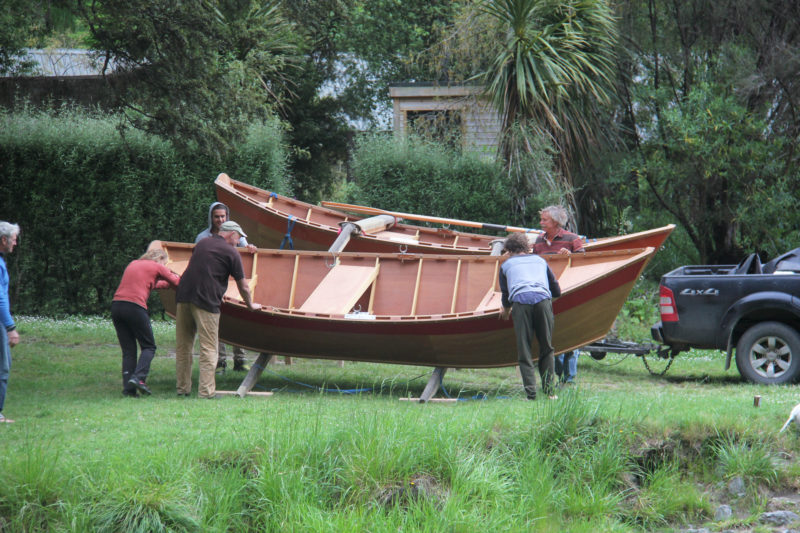 Richard Player
Richard PlayerHours after completing the trailer modifications, we parked by the shore of the Rangitikei to see if the boats would actually float. An open boat like this weighs only around 300 pounds.
Brian’s dream of dories on the Whanganui was a tremendous gamble. It was a new concept and had to pass through labyrinthine layers of government inspection, inquiry, and approval. More importantly, the idea had to be embraced by the Maori iwi (tribes), through whose homeland the river flows. The Whanganui is unique, being the first river in the world to be granted personhood, with rights of its own–a concept confusing to the western capitalist mind, but perfectly natural to the Maori.
The machinations of government are slow, and the deliberations of the Maori iwi are slower yet. Brian had long enjoyed working with the Maori, if not the federal bureaucracy, and the giant leap of faith we were engaged in was his best bet: Build beautiful boats, prove they can work on the river, present his case, and cross his fingers. He believed the wooden boats would resonate with the heritage of the Maori wakas (dugout canoes) that once plied this river. He asked the Maori to help name the boats.
Over drinks one evening, Brian talked about Martin Litton, who brought dories to the Grand Canyon during his victorious fight against proposed dams there. I was amazed at how familiar Brian was with the details and nuances of the tale. For him, Litton was a true hero and role model. Brian, an ardent environmentalist in his own right and a man of great heart, hoped to use his own company to bring awareness to regional issues and work toward solutions. He told me, “I don’t really give a damn if this makes money. In the end, I just want to have made a difference.”
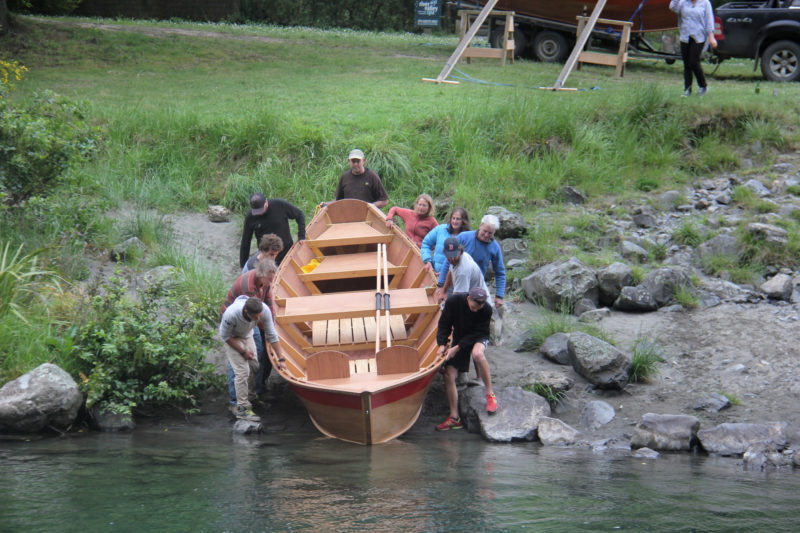 Richard Player
Richard PlayerIt is always an emotional moment when a new boat first kisses the water. This 100-yard stretch of the Rangitikei is a rare calm moment in an otherwise frothing cascade.
Early Saturday morning we piled into the van with Brian, Nicola, and two friends: Tommy, a Maori horseman who worked with Nicola, and Sam, a Sri Lankan guru of sorts who had been encouraging the Megaws to pursue their wildest dreams. We drove past the great snow-capped Ruapehu and its brother volcanoes, Ngauruho and Tongariro, which gave birth to this island and formed the headwaters of the Whanganui. At Taumarunui, where the Ongarue River meets the Whanganui, we stopped for the typical Kiwi snack, meat pies. On a point of land where the two rivers meet, we unloaded the boats, dropping one into each river. Nicola’s father, Old Brian, waved goodbye and headed to Whakahoro to meet us downriver the following afternoon.
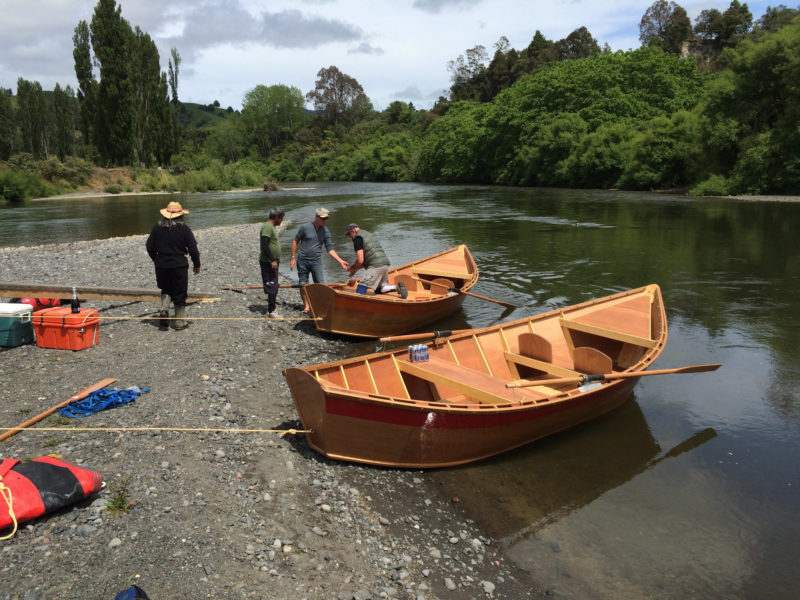 Brad Dimock
Brad DimockAt the confluence of the Whanganui and the Ongarue we loaded the new boats for their first journey. We quickly floated out of civilization and into the Whanganui Gorge.
We were at the beginning of the so-called Whanganui Journey, one of New Zealand’s nine “Great Walks” and the only one that offers the option of traveling on a water trail rather than a footpath. It officially ends some 90 miles downstream at Pipiriki. Although we only had time to go partway, we were giddy to have finished the boats in time for this overnight trip. The boats ran every bit as beautifully as we had hoped. The natural wood and earth tones of these graceful hulls exquisitely complemented the jungle-green walls of the gorge.
 Brad Dimock
Brad DimockAndy Hutchinson recognized the familiar feel of a Briggs boat as he entered a rapid on the Whanganui River. Oregon drift boats like these are rowed with the boatman facing the high prow, which is, technically, a highly evolved stern—and transom behind the boatman is a truncated bow.
Andy, Kate, and I took turns rowing one boat, while Brian and Nicola traded off in the other. Sam paddled merrily along in an inflatable kayak. Even our Maori friend Tommy, who was far more comfortable on a horse, took the oars. As we floated, Tommy pointed out different trees, birds, and landforms, and told us of their lore.
We set up camp at Ohinepane and Brian cooked dinner. I wandered about the area and kept finding myself back at the river, looking at our two newborn “daughters” tied against the shore. I caught Brian and Andy staring at them as well. I rolled my sleeping bag out on the floor of one boat and drifted to sleep looking at the constellations in the Southern sky.
In the morning we loaded up, rowed, stopped to explore an old farm, and gawked at the many waterfalls along the way. The palms, tree ferns, and wide variety of deciduous trees changed textures endlessly. Dense, feathery, viney, rolling hills gave way to steep rocky cliffs. Late that afternoon we found Old Brian at Whakahoro, loaded the boats, and returned to River Valley, knowing that we’d only seen the warm-up act of the Whanganui. Andy, Nicola, and I packed for a long drive to the airport the next morning.
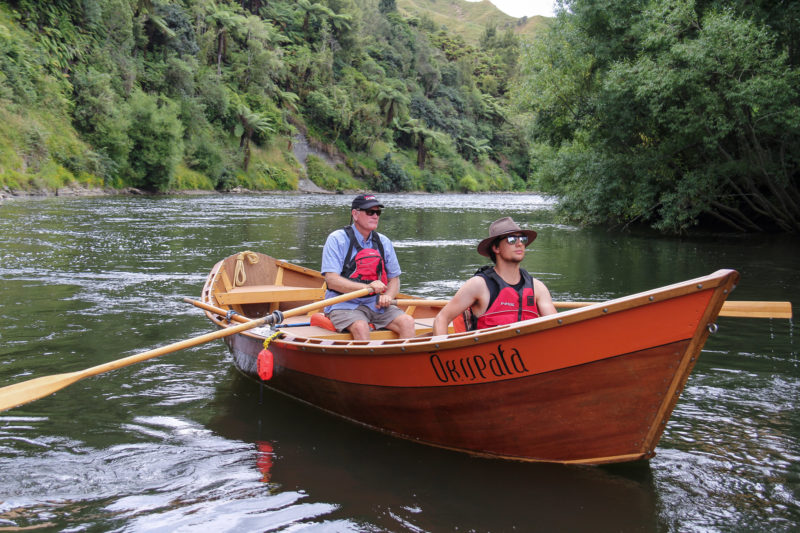 Brian Megaw
Brian Megaw The dories enter their career of professional servitude on the Whanganui River amid a jungle of tree ferns and waterfalls.
A year passed and Brian’s vision fell into place piece by piece. His Whanganui River dories gained government approval. The Maori iwi accepted his business plan. Twelve months after the boats were completed, Maori elders convened at Pipiriki in a moving riverside ceremony to bless and christen the boats. In the tradition of Martin Litton, who named his dories as memorials to places of beauty desecrated or destroyed by man, the boats were named for two of the river’s tributary streams that had been diverted as part of the Tongariro Power Scheme: TE WHAIAU (The Current Follower) and OKUPATA (My Little Droplets of Water). The names could not be more fitting, in homage both to the watershed of the Whanganui, and to Martin Litton, who died at the age of 97, just weeks after our boats were completed. As the boats’ builders, we were honored and moved to have played a role in this story, and delighted to see the design migrate across the Pacific and take root in another magical place where a river is revered.![]()
Brad Dimock builds all manner of boats at Fretwater Boatworks in Flagstaff, Arizona. In the summer he rows dories through Grand Canyon, and teaches Building the McKenzie River Dory at WoodenBoat School in Maine. TE WHAIAU and OKUPATA are still running the river for Brian Megaw and Whanganui River Dories.
If you have an interesting story to tell about your adventures with a small wooden boat, please email us a brief outline and a few photos.
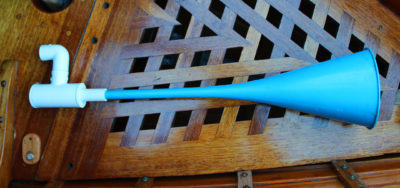

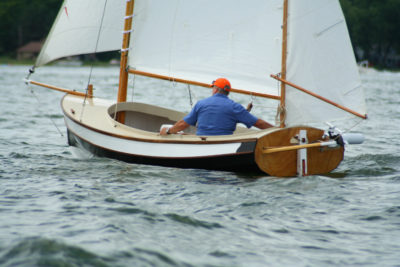
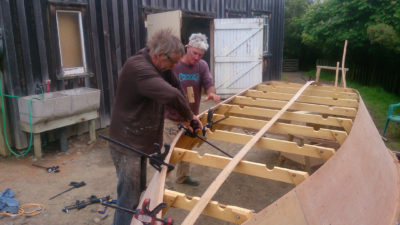
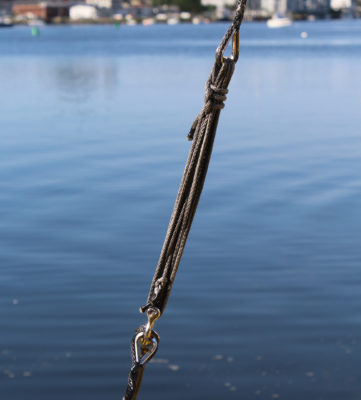
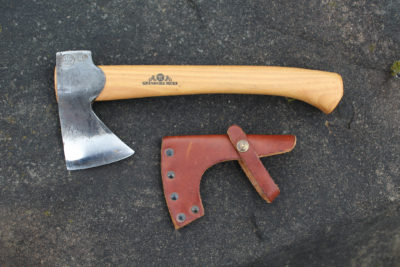


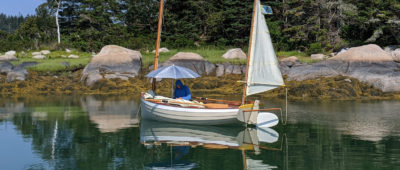
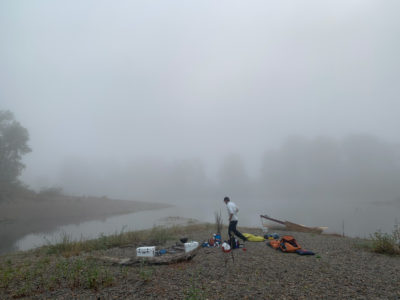
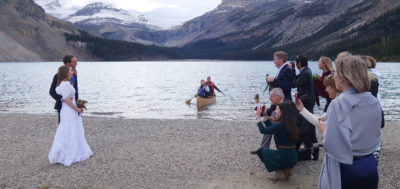
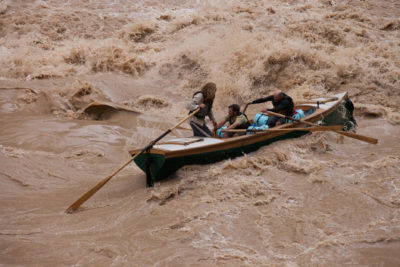
My experience with dories came with a bear hunt in Quebec, Canada, and I can say that I liked the way they ran. The sons of the man who built them was from Newfoundland and they were called Newfie dories. The frames were cut from trees that grew on hillsides, so the curve was in them.
Considering that we have the best boatbuilders in the world, it seems very strange to import a couple of Yanks to do this job!
A bloody good story. I have been wanting to do this trip for a few years. Will now make a bigger effort. Nice boats.